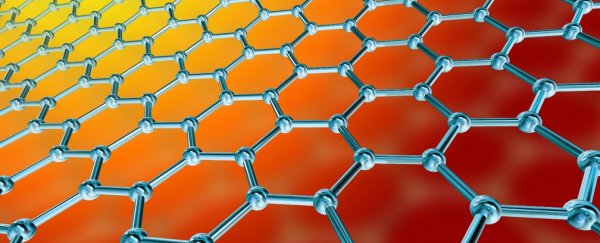By now we're all well aware of the awesome potential of graphene - it's tougher than kevlar, stronger than steel, and has the ability to filter fuel right out of the air. But although graphene can essentially be created from any carbon source, researchers have struggled to find a way to produce it cheaply and quickly en masse.
Now researchers from James Cook University in Australia have found a new way to make the wonder material from the tea tree plant, Melaleuca alternifolia - the same tree that produces a medicinal essential oil that's used to treat acne and insect bites - and it's one of the quickest, easiest and cheapest techniques tried so far.
"The researchers found that they could manufacture a significant amount of almost defect-free graphene in a matter of seconds to minutes, while current methods usually take several hours," Lisa Zyga writes for Phys.org.
Importantly, the technique also works without the need for any catalysts, or non-renewable or toxic precursors. And it works at relatively low temperatures.
"This research realises fabrication of good quality, few-layer graphene from an environmentally friendly precursor," lead researcher Mohan Jacob told Zyga. "Overall, large-area graphene fabrication using a fast, environmentally friendly precursor and process at a relatively low fabrication temperature is the major significance of this work."
The team, which also involved researchers from Singapore, Japan, and the US, made their graphene sheets by taking vaporised tea tree extract and feeding it through a heated tube into an activated plasma field. This process almost instantly transforms the vapour into graphene film.
The researchers used this graphene film to sandwich a semiconductor between itself and aluminium, creating a very basic version of an advanced memory device called a memristor. Researchers have been working on building faster and cheaper memristors for decades, because they work sort of like human memory in that they remember information based on their level of electrical resistance - so unlike RAM memory, they retain information even if a system loses power.
Importantly, Jacob and his team showed that the graphene film was highly hydrophobic, which is a crucial attribute for developing implantable biomedical devices and wearable electronic systems. The researchers are now looking at ways to further improve their product for this type of use.
"We will be focusing on optimising the material properties and implementing the material in various electronics applications," Jacob told Phys.org. The research has been published in Nano Letters.
Let's hope that this new technique proves replicable on the large scale, because we're all pretty excited for graphene to finally start delivering on some of its big promises. One thing's for sure, it definitely sounds a whole lot neater than making graphene in your blender.
Love science and technology? You can study Electronic Systems and the Internet of Things at James Cook University.
